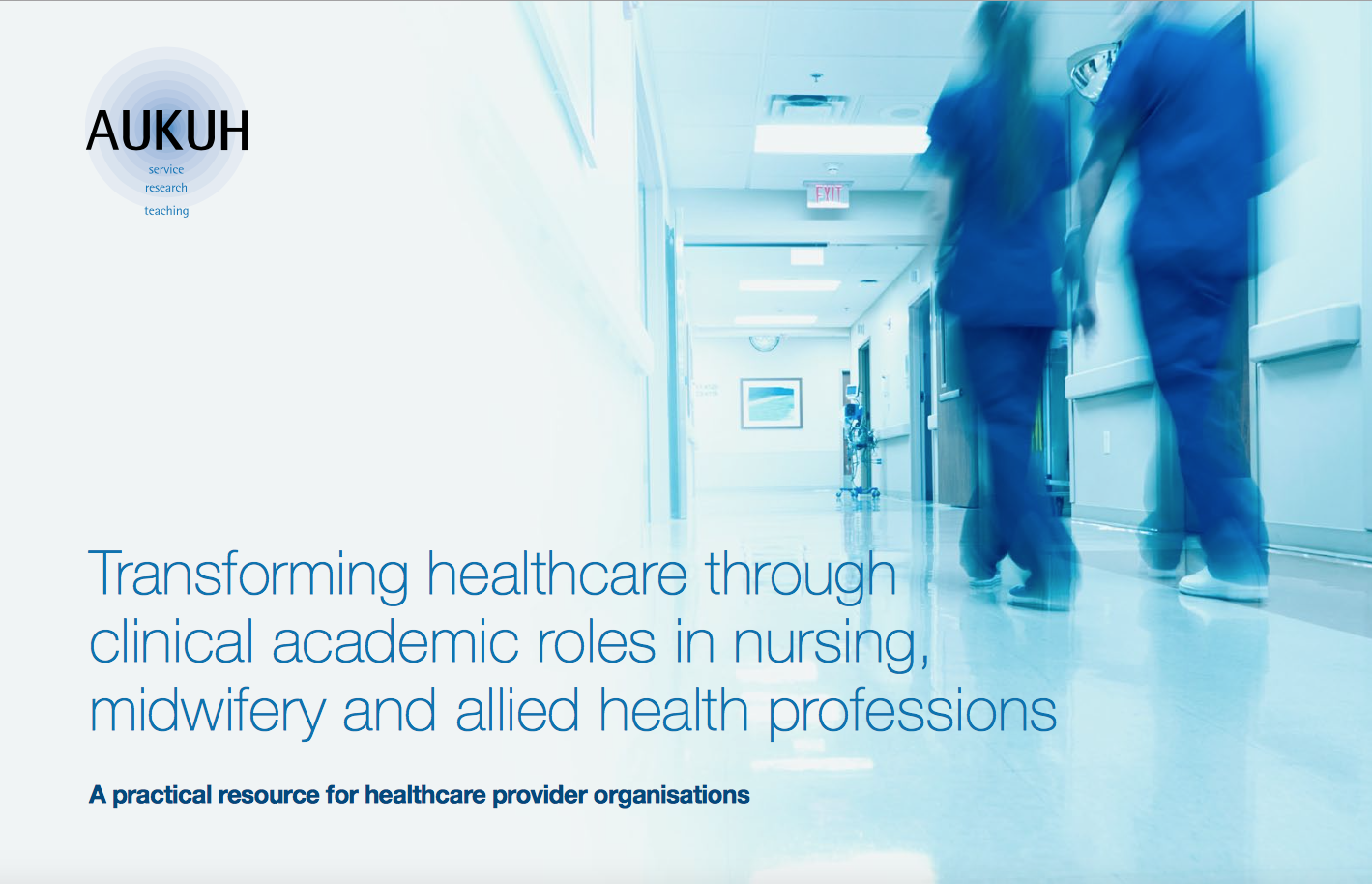Clinical academics make an invaluable contribution to healthcare yet it is estimated that only 0.1% of the Nursing, Midwifery and Allied Health Professional (NMAHP) workforce are currently in these roles. The absence of a clear clinical academic pathway has been a barrier to NMAHP pursuing these roles (Coombs et al., 2012). Earlier this month the Association of UK University Hospitals released guidance on transforming healthcare through clinical academic roles in NMAHP (http://www.medschools.ac.uk/SiteCollectionDocuments/Transforming-Healthcare.pdf). The guide provides a practical resource to develop and sustain NMAPH clinical academic roles. It is aimed at healthcare provider organisations and anyone interested in fostering clinical a
cademic roles for NMAHP. In each section, a ‘what’, ‘why’ and ‘how’ format is used accompanied by case study examples.
I am a full-time PhD student and part-time paediatric oncology nurse. As I reach the end of my first year in both roles I am grateful for this document and the fact that it encourages healthcare providers to support positions like mine. My clinical role has valuable benefit to my academic work. Metaphorically, I bring my patients and their families to my academic work and use their experiences to critique my own research and the wider literature. My patients provide me with the motivation to excel in my research and to ensure it is effectively disseminated to benefit them. Similarly, my academic role enables me to bring an evidence-based perspective to my clinical role. As a newly-qualified nurse, this grounding in evidence-based research helps me look critically at procedures and gives me an awareness of the experiences of my patients and their families beyond what I see on my ward.One example of how this manifests itself is in conversations with parents about the challenges of parenting a child with cancer. My PhD focuses on how parents of children with cancer manage their child’s cancer-related pain at home. Through academic reading, I understand the perspectives of parents in a way which could not be gleaned solely from clinical experience. This understanding guides my conversations with parents informing my responses to their questions and probing topics which literature tells me they are likely to be unsure about and want to discuss. Parents’ responses in these conversations enable me to critically appraise the literature and to identify gaps where further research is required. This is an example of how my academic role complements my clinical role and vice versa. This interaction enables me to provide more effective care to patients and their families both directly in my clinical role and indirectly through my academic work.
Others have reported similar experiences of these roles describing the life of a clinical academic as the perfect work-work balance and the synergy between clinical and academic roles as the ‘ladder of professional development’ (Lea, 2015). The release of guidance on transforming healthcare through clinical academic roles in NMAHP is welcome. If healthcare providers follow this guidance, they will increase both the number and the impact of clinical academic NMAHPs. Patients and their families will benefit from the implementation of these guidelines.
Roses Parker, PhD student at London South Bank University and Staff Nurse, Royal Marsden Hospital
Parker11@lsbu.ac.uk, @Roses_Parker
References
Coombs, M., Latter, S. and Richardson, A. (2012) Developing a clinical academic career pathway for nursing., British Journal of Nursing, 21 (18). Available from: http://search.ebscohost.com/login.aspx?direct=true&profile=ehost&scope=site&authtype=crawler&jrnl=09660461&AN=83211985&h=rNZ3ERjGKD1T8LJjhneTdUHgdZxyCV5mYS5gh0Xz7Rzjp%2BBIQ2GzkyrmrzIo3suErrn3bn37y9sIvozDOQAxMw%3D%3D&crl=c [Accessed 17 November 2016].
Lea, S. (2015) Perspectives: A newly-qualified nurse’s experience of starting a clinical academic career, Journal of Research in Nursing, 20 (3), pp. 252–255. DOI:10.1177/1744987115580896.